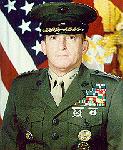
Without doubt, one of the major reasons that the Naval Services have developed into the potent warfighting force that they are today can be directly attributed to the strength and versatility of their Naval Aviation. Shortly after the Wright Brothers' Flyer took to the air at Kitty Hawk, North Carolina, Navy and Marine Corps visionaries such as Eugene Ely and Alfred A. Cunningham realized the potential applications of airpower in future naval campaigns. They believed that the naval forces of the future would have to fight as an integrated team, on the sea, on land, and in the air. From these early visionaries' quest grew a naval and amphibious combined arms capability that changed the course of history. For the last 87 years, the Navy and the Marine Corps have integrated the power and potential of Naval Aviation into their warfighting organizations - giving rise to the most powerful naval and amphibious power projection force ever known to mankind.
From its humble beginnings as a sea-plane and balloon force before the First World War, Naval Aviation has evolved into one of the more potent, flexible, and innovative forces in the history of air warfare. During the 20th century, Naval Aviation pioneered innovations such as aircraft carriers, steam catapults and arresting wires, dive-bombing, close air support, aerial medical evacuation, vertical assault, and STOVL. As we stand poised on the brink of the 21st century, Naval Aviation is once again forging ahead developing and procuring the technologies we need to prevail on our future battlefields of the 21st century, such as the V-22 Osprey tilt-rotor, and the STOVL Joint Strike Fighter.
The United States Navy and Marine Corps have earned a reputation for being forward thinking and innovative, while at the same time being always ready to respond to any threat to our national security. The challenges and uncertainties looming off our bow in the 21st century will require the Naval Services to stay true to this legacy of vision, innovation, and readiness. The Naval Services have made their greatest progress when we thought, planned, innovated, trained, and fought as a team. As in the past, this team philosophy is the key to our future.
Charles C. Krulak
General, U.S. Marine Corps
Commandant of the Marine Corps